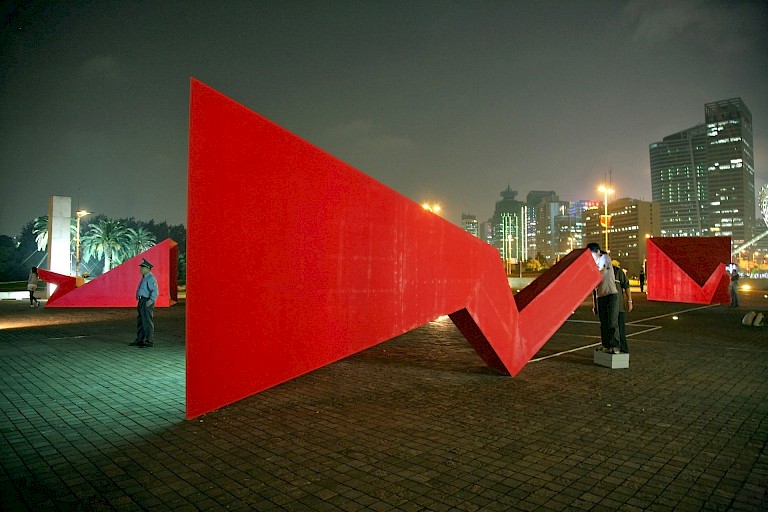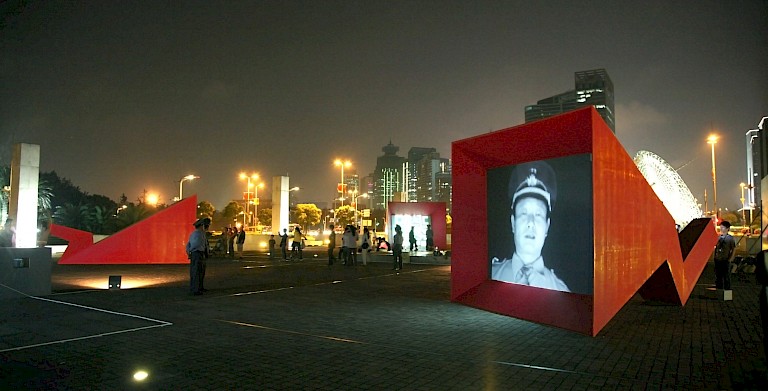



Occasionally the screen at the large end revealed the faces of visitors who had chanced upon the cameras embedded at the small end, but these images were always rapidly eroded by the black and white lines of a new QR code appearing. The IDWorms converted people into relatively anonymous networked ID signs or codes. In a society inundated with cell phones and digital codes of all kinds, this aspect of NeORIZON appeared to engage users in questions concerning their/our immersion in technology, and more especially, in the relentless commodification of life itself (the QR codes are reminiscent of product barcodes found on all major items of mass consumption).
The ‘IDscape,’ a giant screen in the midst of the IDWorm invasion, featured a steadily growing urban architecture of QR codes, each QR code coming from a visitor encounter with an IDWorm. As the urban landscape continued growing, earlier parts receded to make way for new QR towers, leaving audiences with the spectacle of a never-ending and ever-growing city. The ever-expanding city, like ever-increasing profit, is a popular contemporary fiction. Yet that has not prevented individuals from making actual decisions on that shaky basis. Benayoun uses the term critical fusion to describe his work, by which he means a combination of fiction and reality. NeORIZON is a perfect example of critical fusion. The fiction of the IDworms and sci-fi scenario, sited in public space, was blended with local reality, producing at least some critical encounters, thought and imagination, regarding the many fictions structuring real life, fictions such as those previously mentioned, myths of endless profit and infinite resources and space.
Formally, NeORIZON was a successful and complex installation that worked according to design, and engaged large crowds. Conceptually, it approached social or cultural criticism through fiction, implicating audiences subtly in a critique of capitalist and networked culture. In terms of placemaking, NeORIZON confronts audiences with questions concerning their responses to, and responsibilities for, the rapid transformation of Chinese society and its spaces, and the alignment of the one-party State with (private) capitalist interests, increasingly at the expense of public interests. It asks audiences to imagine themselves as objects of mass production and consumption, assembled on a factory line, and stamped or implanted with a unique identifying code such as a barcode. It evokes a future that seems ‘sci-fi’ but yet hovers dangerously close to the real, and gifts this to the public as its object of contemplation.
All copyright belongs to Shanghai Academy of Fine Arts, Shanghai University.



